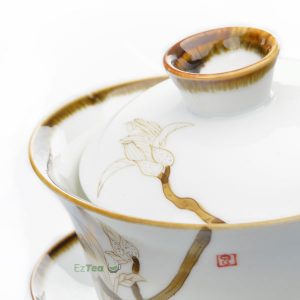Is a Semi-fermented Tea an Oolong?

Two of the above are oolongs, one is a black tea, and the other a semi-fermented black tea, can you point them out?
the market wants more choices
The production of oolong is defined by the degree of “fermentation” as well as the process of production. Before we further explore how oolong is defined, let’s understand the context of why there is confusion of the definition in the market.
While the global market of black tea plateauing, those for other categories of tea are growing. Green tea has been benefiting from positive reports of scientific researches, but with poor quality products flooding the market, some consumers do not take on the cup. Plantations that have not been setup to produce green tea have felt the urge to jump into the wagon. Some were convinced that they just skip the process of fermentation with their leaf crops and will get green tea. On the contrary, green tea production is a lot more complex than what some marketeers want the public to understand. Such saying as both green and black tea come from the same plant etc, etc, is still the dominating perception (misperception) in the West.
Similar thing is happening to white tea, with an additional shady preemptive propagation by marketeers in the West saying that white tea is a lot more expensive than other teas. Guess who is making more money? Nevertheless, these two categories are still growing, albeit not so much to the benefits of tea estates who have not been traditionally good at these teas than to the marketeers.
turning black teas into oolongs?
These estates, usually giant in size and run mostly on the foundation of cheap labour, wherever they are, works on the condition that they produce with maximum automation (mostly basing on their existing machineries) and minimum demand on the skills of the labourers.
So after green and whites, as the West began to wake up to a category of tea called oolongs, naturally these giant estates want to take a proportional share of the market. The quickest way to do that is to adapt the idea of oolong into the way of production they have established for black tea, so there is minimal investment in producing a different tea. And minimal change in labour cost and production workflow. And no new plants to grow. To achieve that, the easiest way is to redefine what an oolong is, since it is not well-known in the West…











When Oxidation occurs it releases tannins or the sap in the leaf cells, then dried depending on how long is what would be considered a black tea or oolong tea. Is that correct? I believe also that oxidation can occur without even touching the leaves.
Yes you are right; oxidation can occur without even the leaves being touched, which is basically the idea for white tea. However, there are a lot more in oolong than how long the oxidation process is. That is why we have this article to explain it.
Like
Thank you, this was really informative! It’s interesting how the temperature the leaves are oxidized at affects the quality.
Glad you find it useful. Actually if you taste teas that are produced the slow traditional way, the actual difference can be even more profound then what the graph visually presents.